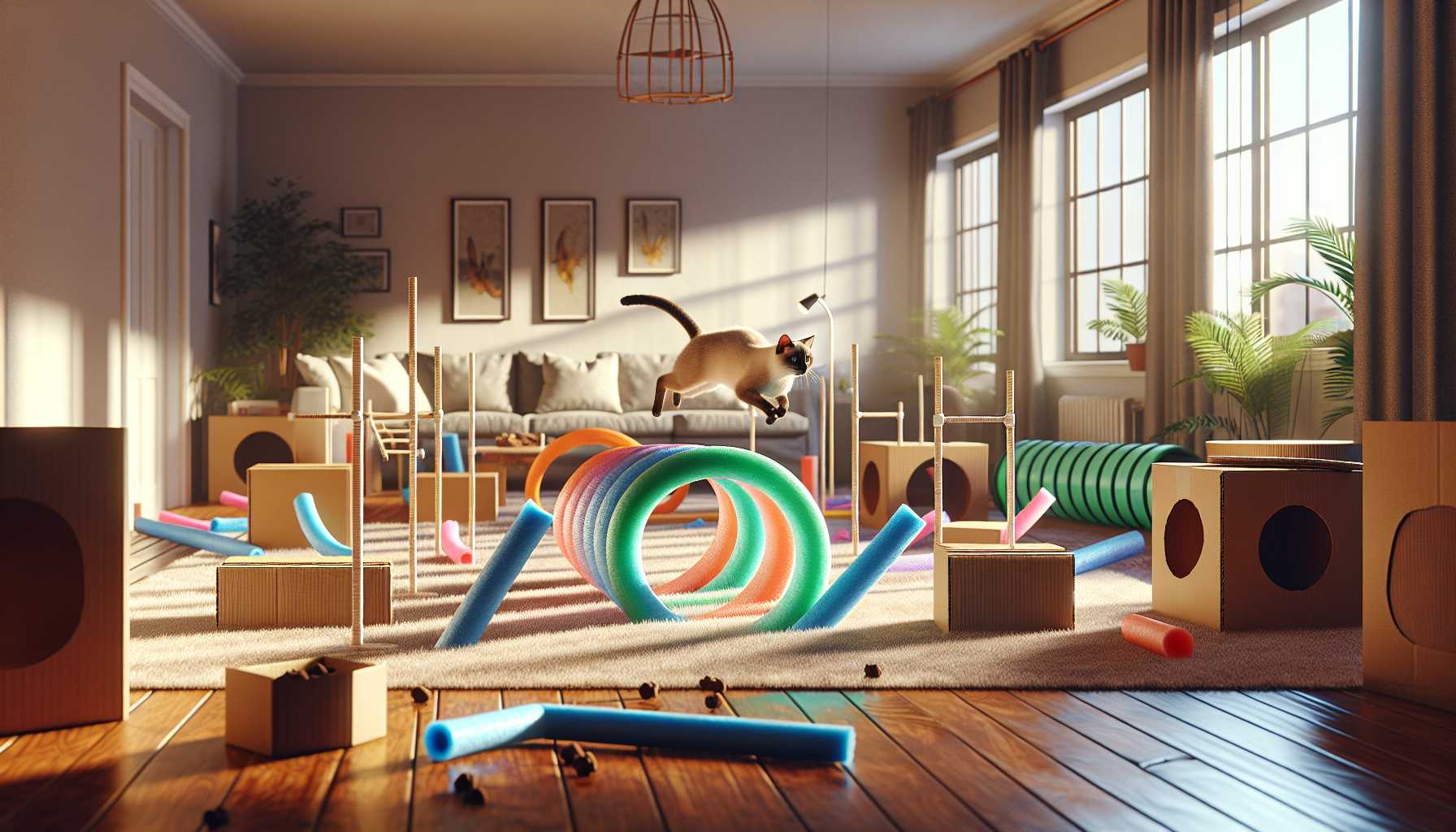Cat Agility Course: Indoor Training and Setup Guide

Guide to Setting up an Indoor Cat Agility Course
Have you ever seen your cat dash around your home and thought, "Gosh, they could be a fantastic athlete!"? You're not mistaken! Let's capitalize on that natural energy and turn it into an enjoyable and enriching activity with an indoor cat agility course.
The Importance of an Agility Course for Your Cat
Our house-bound cats need both mental and physical stimulation. Visualize an agility course as a fusion of a playground and a gym - it's the ideal way to keep your furry companion content and in good shape. Plus, it serves as a wonderful bonding time!
Necessary Equipment for Your Indoor Course
Getting started doesn't have to be expensive. Here's the basic equipment you'll require:
- Tunnels (cardboard boxes are a fantastic option)
- Jump bars (pool noodles are suitable)
- Weaving poles (PVC pipes are ideal)
- Different height platforms
- Cat-friendly toys as rewards
Organizing Your Training Space
Start with a modest space! Designate an area in your home that's free of breakable items and offers a safe training environment for your cat. Keep in mind, even the smallest of spaces can be transformed into a fun adventure land for your furry friend.
Training Guidelines and Techniques
Start off slow! Here's how you can begin:
- Let your cat naturally explore the equipment
- Use treats to encourage positive reinforcement
- Begin with one obstacle at a time
- Keep training sessions brief (5-10 minutes)
- Make it enjoyable - if your cat loses interest, try again later
Avoidable Common Mistakes
Don't pressure your furry athlete! Big mistakes to avoid include:
- compelling participation
- prolonged training sessions
- neglecting foundational lessons
- not rewarding progress
Advanced Course Setups
After your cat has mastered the basics, consider the following:
- Constructing figure-eight configurations
- Introducing height variations
- Incorporating timed challenges
- Mixing up obstacle sequences
Health and Safety Reminders
Keep your cat's health at the forefront:
- Check the equipment's sturdiness daily
- Ensure a safe landing space is provided
- Keep an eye out for signs of exhaustion
- Always have water easily accessible
Tracking Your Cat's Progress
Maintain a training log! Capture what techniques and strategies are effective and which ones aren't. Document your cat's progress with videos, which aren't only cute but are also beneficial for tracking improvement.
Keep in mind, each cat is unique. Some might turn into agility pros, while others may lean towards a more relaxed pace. The fundamental goal is to create an enjoyable experience for you both!
Looking to share your cat's agility journey? Launch a social